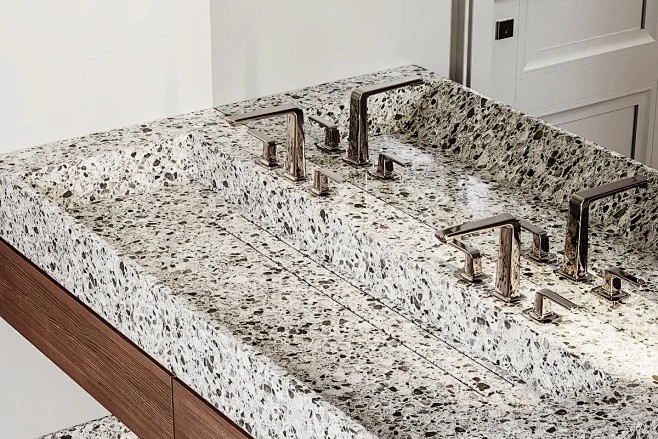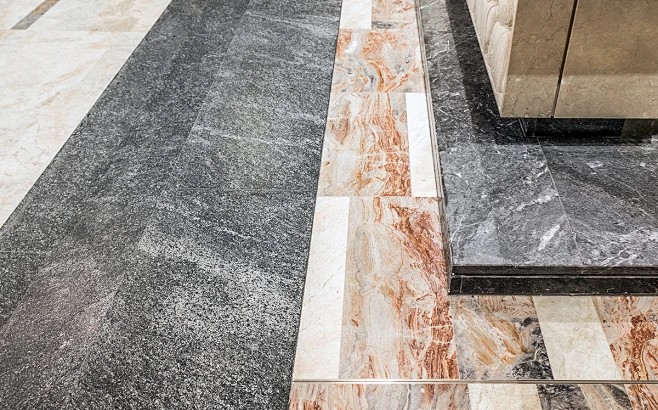Introduction to Stone Polishing Discs
Stone polishing discs are essential tools designed specifically for stone surface treatment. Stone polishing and grinding are important processes in the construction and decoration industries, as they determine the aesthetic and functional quality of stone surfaces. As the architectural decoration industry continues to develop, the demand for high-quality stone finishes has surged, highlighting the importance of these polishing discs. This article provides an overview of these discs, their function, types, and their importance in stone surface treatment.
What are Stone Polishing Discs?
Stone polishing abrasive discs are grinding tools specially designed for stone surface treatment. These discs are used in polishing and grinding machines to improve the appearance and texture of stone, achieving a brighter, flatter surface.

The Role of Stone Polishing Discs
1. Surface defect removal
One of the main functions of stone polishing discs is to remove surface defects. These deficiencies may include:
Scratches: Over time, stone surfaces can accumulate scratches from daily use or installation. Polishing discs can effectively eliminate these defects and restore the original beauty of the stone.
Uneven: Natural stone often has an irregular surface. A polishing disc helps smooth these areas, ensuring a smooth, even surface.
Color Difference: Color variations may occur due to inconsistencies in the stone or cutting process. A polishing disc can help blend these differences, resulting in a more cohesive look.
2. Smooth and refined surfaces
After addressing surface imperfections, stone polishing discs play a vital role in smoothing and refining the stone surface. The polishing process involves several stages, usually starting with a coarser grit and gradually transitioning to a finer grit. This progressive approach can:
Enhanced texture: Using a variety of grits helps create a refined texture that is pleasant to the touch and visually appealing to look at.
Increase gloss: Polishing discs are designed to enhance the gloss of stone surfaces, making them sparkle and reflect light beautifully. Polished stone not only looks more attractive but also adds a touch of elegance to any space.
3. Enhance durability
Polished stone surfaces are generally more durable than unpolished stone surfaces. The polishing process helps:
Enhanced stain resistance: Polished surfaces are less porous, making them more resistant to stains and spills. This is especially important in high-traffic areas or spaces with food and beverages.
Improved scratch resistance: The smooth surface produced by the polishing disc helps minimize the visibility of future scratches, thereby preserving the appearance of the stone over time.
4. Anti-pollution performance
In addition to enhanced durability, polished stone surfaces also exhibit better resistance to stains. The smooth surface created by the polishing disc makes it more difficult for dirt and grime to adhere to the surface. This results in:
Easier to clean: Polished surfaces are easier to clean, requiring less effort and fewer cleaning products. This not only saves time but also contributes to a more sustainable cleaning method.
Longer-lasting beauty: With less dirt accumulation, polished stone surfaces retain their beauty longer, reducing the need for frequent maintenance.
Types of Stone Polishing Discs
1. Diamond polishing disc
Overview
Diamond polishing discs are one of the most popular and widely used tools in the stone industry. They are embedded with diamond particles, providing exceptional hardness and wear resistance. This makes them ideal for the rough and fine grinding stages of stone processing.
Main features
High hardness: Diamond particles allow these discs to cut hard materials like granite and quartz with ease.
Durability: Diamond discs last longer than other types of polishing discs, making them a cost-effective choice for heavy-duty applications.
Versatility: They can be used for a variety of tasks, including grinding, shaping, and polishing, making them suitable for different stages of stone treatment.
Application
Rough grinding: Remove large imperfections and shape the stone.
Fine grinding: Get a smoother surface before the final polishing stage.
Wet and dry applications: They can be used in both wet and dry conditions, providing flexibility depending on the specific requirements of the job.
2. Resin polishing disc
Overview
Resin polishing discs are designed for the final polishing stage of stone processing. These discs are made with a resin binder that holds abrasive particles for a finer finish and enhanced shine.
Main features
Smooth surface: Resin discs are specially formulated to provide a high-gloss finish, making them ideal for the final stages of polishing.
Flexibility: The resin adhesive provides some flexibility, allowing the disc to conform to the stone surface, which is especially useful for uneven surfaces.
Less aggressive: Resin discs are less aggressive than diamond discs, making them suitable for delicate polishing tasks.
Application
Final polish: Achieve a mirror-like finish on marble, granite, and other stones.
Repair work: Restore the shine to worn or dull stone surfaces.
Detail work: Ideal for intricate designs and detailed areas that require precision.
3. Other types of polishing discs
Ceramic polishing discs: Used for polishing softer stones, these polishing discs provide a good finish while reducing the risk of scratches.
Felt polishing discs: Felt polishing discs are often used with polishing compounds and are great for achieving a high shine on softer stones.
How to Use Stone Polishing Pads?
Step 1: Gather materials
Before you begin, make sure you have the following materials:
Set of stone polishing pads (coarse, medium, fine)
Polisher or angle grinder
Water source (hose or spray bottle)
Safety equipment (gloves, goggles and face mask)
Step 2: Prepare the stone surface
Before polishing, clean the stone surface thoroughly to remove dirt, dust, or debris. This will help prevent scratches during the polishing process.
Step 3: Start with a rough pad
Install rough pad: Secure the rough pad to the polishing machine.
Wet the surface: Make sure the stone surface is fully moistened. This will help cool the pad and reduce dust.
Start Polishing: Use a coarse pad to start polishing the stone surface. Move the machine in a consistent, overlapping pattern to ensure even coverage. Focus on areas with larger flaws or scratches.
Check Progress: Stop periodically to check your progress. If the larger defects are removed, you can move on to the next pad.
Step 4: Move to medium pad
Switch pad: Change the coarse pad to the medium pad.
Keep moisturizing: Keep the surface moist to keep it cool and reduce dust.
Buff again: Use a medium pad to further smooth the surface. Again, use overlapping mode and check your progress regularly.
Step 5: Finish with a fine pad
Install thin pads: Replace the middle pad with a thin pad.
Final Wetting: Make sure the surface is still wet.
Polish for a glossy finish: Use a fine pad to get a high-gloss finish. This step may take longer, so be patient and complete it thoroughly.
Step 6: Clean up
Once the desired finish is achieved, clean the stone surface again to remove any residue from the polishing process. This will enhance the brilliance of the stone and reveal the true beauty of the stone.
Important tips for successful polishing
Water is key: Always make sure you have enough water during polishing. Not only does this cool the tool, but it also helps reduce dust and keep the stone surface clean.
Work in sections: If you are working on a large area, consider breaking it into smaller sections to ensure a thorough polish.
Use the correct pressure: Avoid applying too much pressure to the pad as this may cause uneven results or damage the stone.
Safety first: Always wear appropriate safety gear to protect yourself from dust and debris.

 English
English  Português
Português  русский
русский  Chinese
Chinese  French
French  Japanese
Japanese  Spanish
Spanish 



